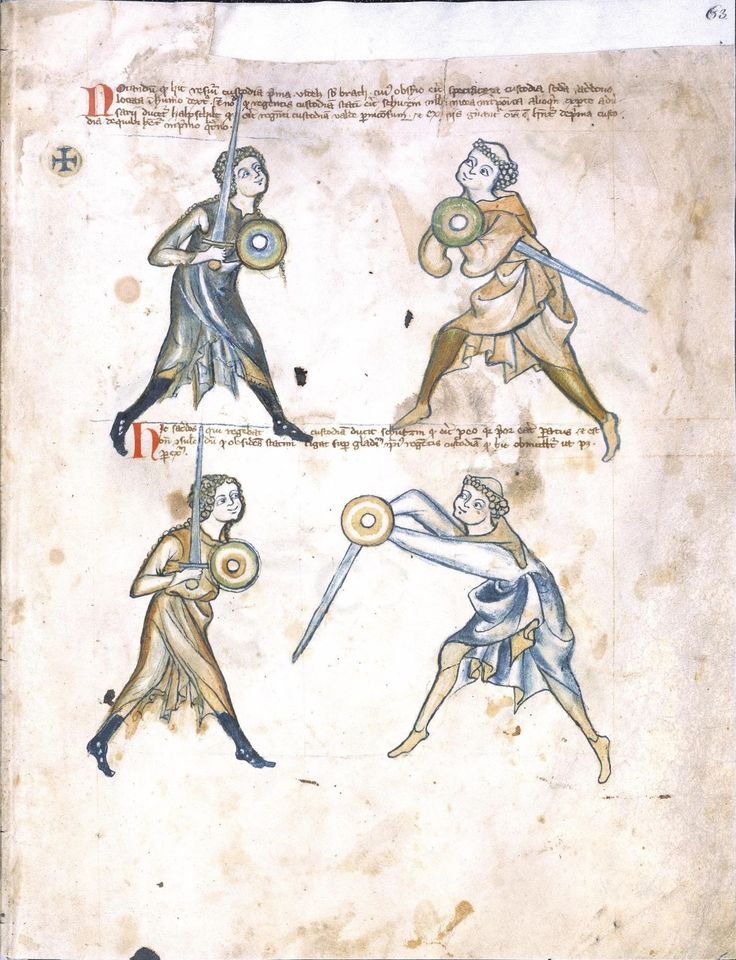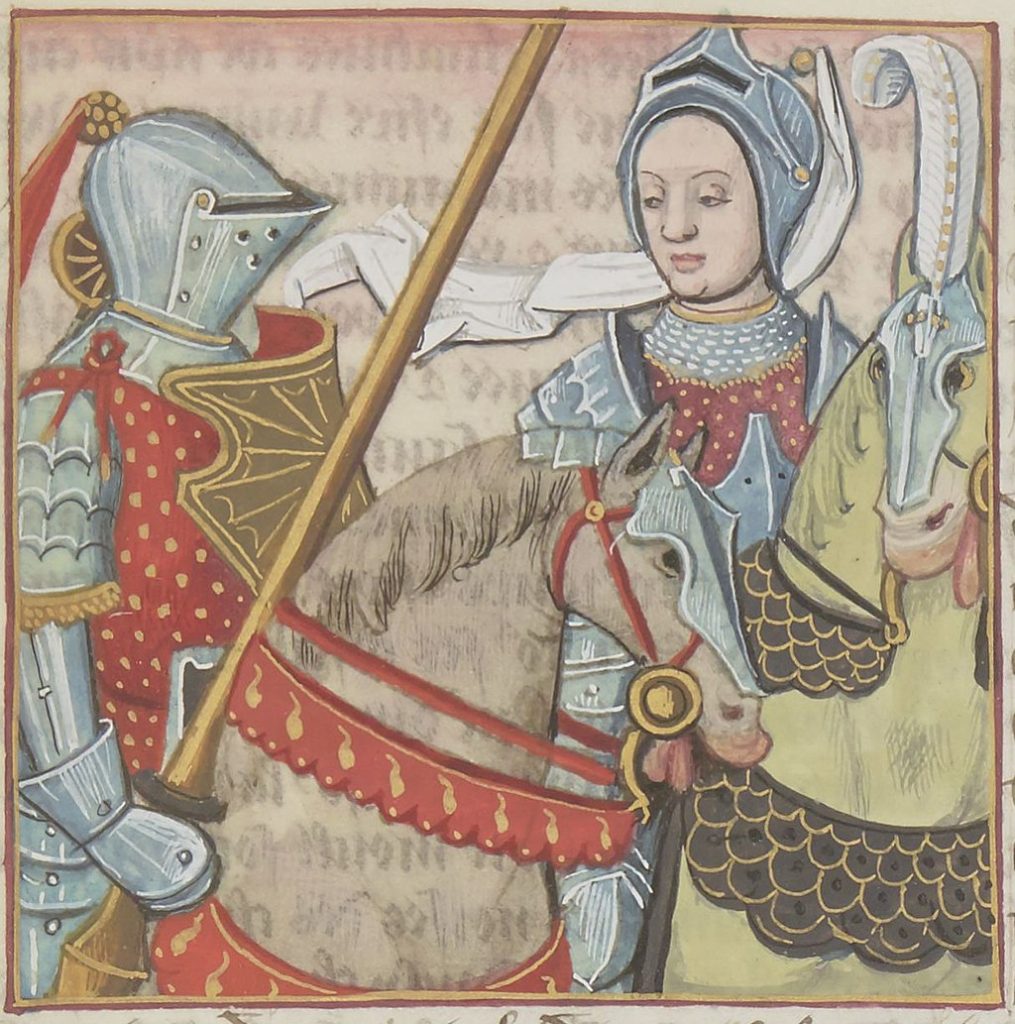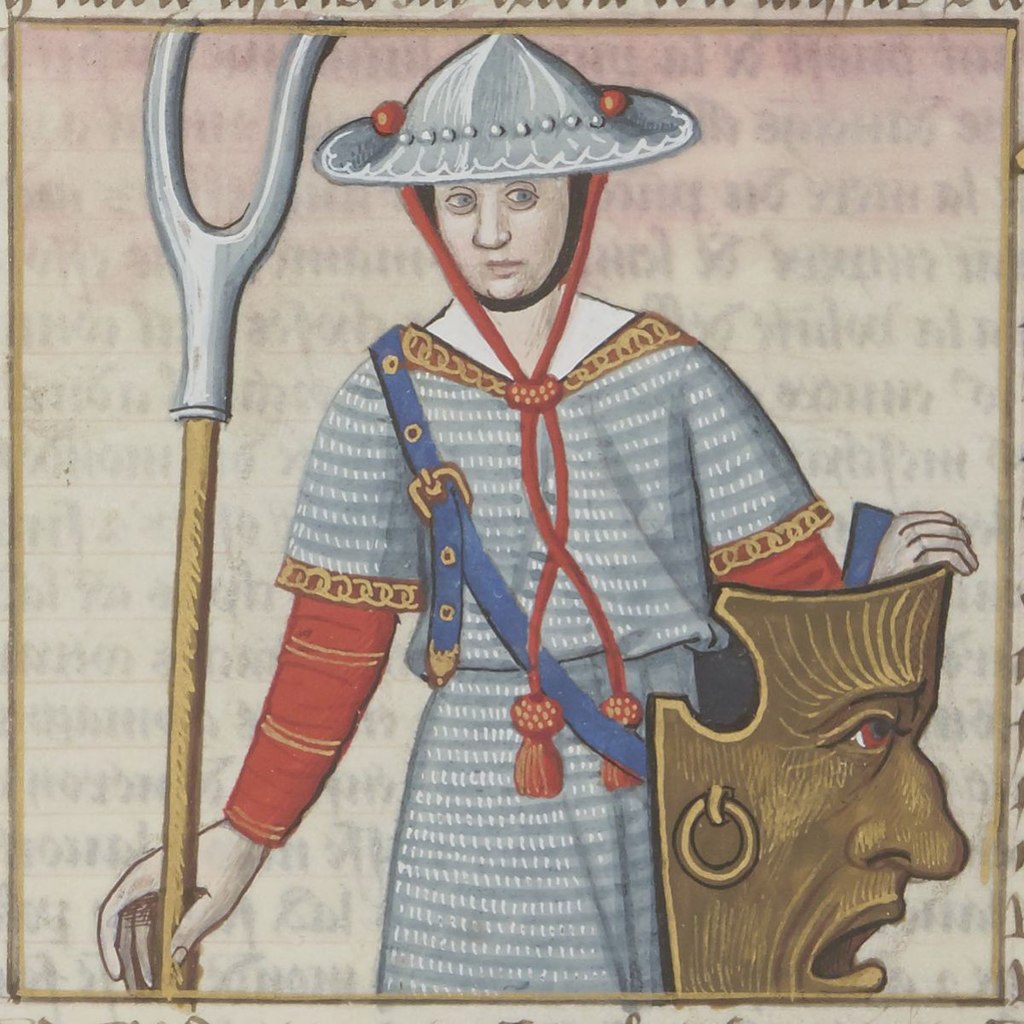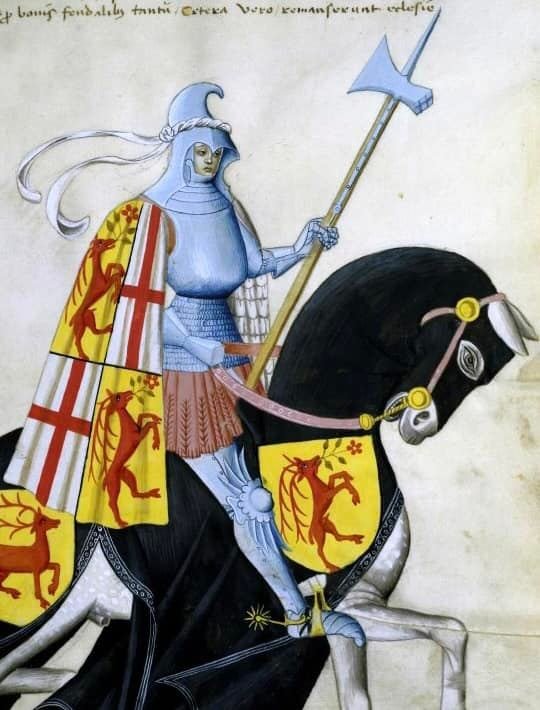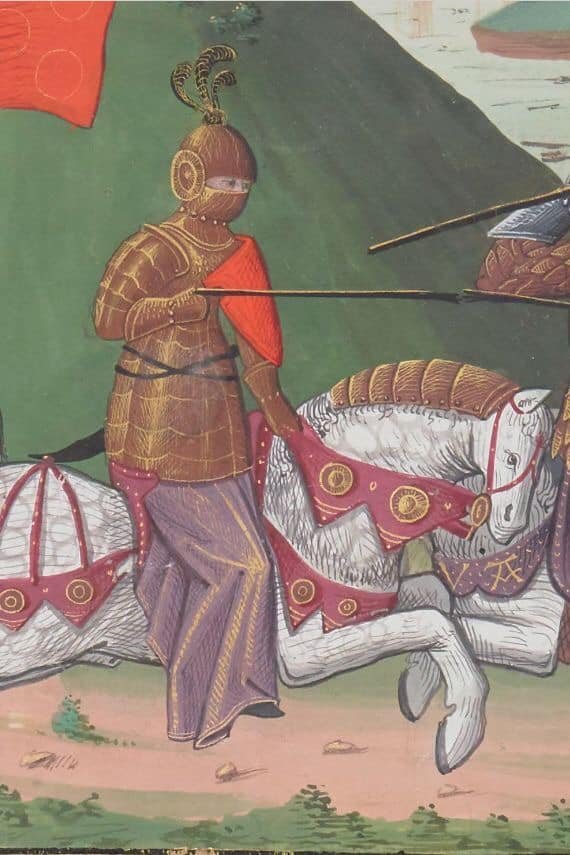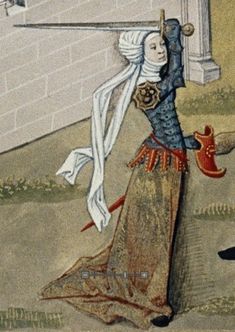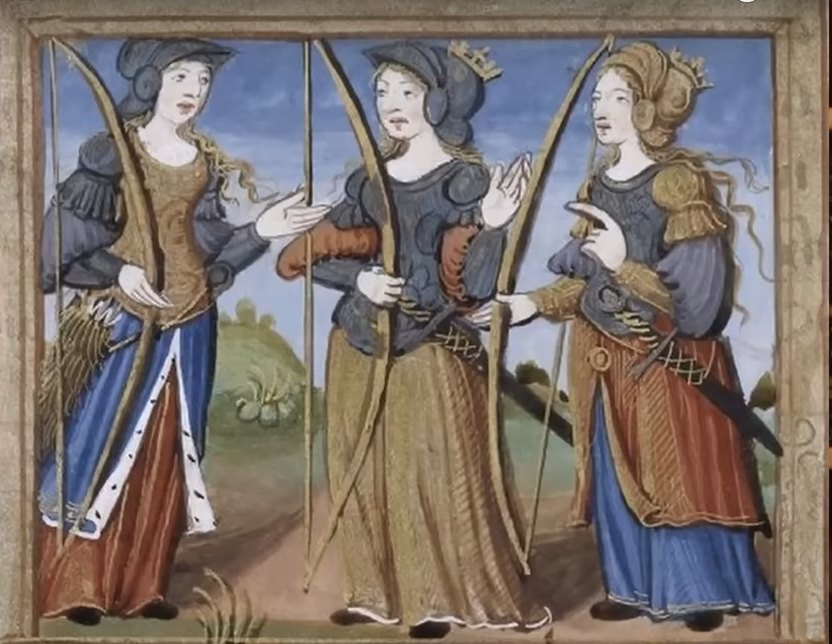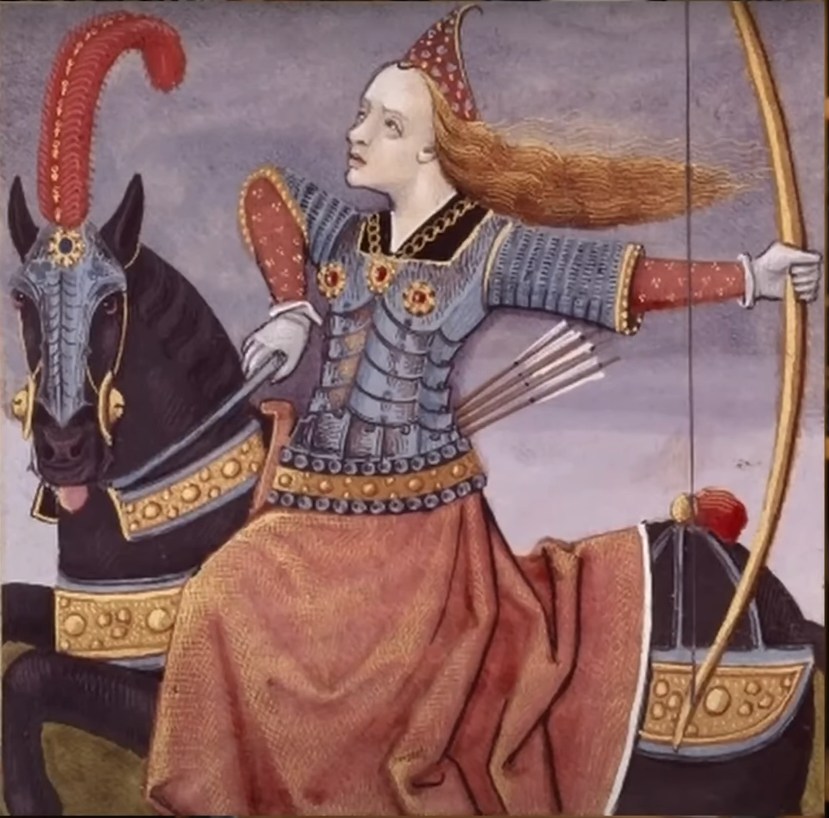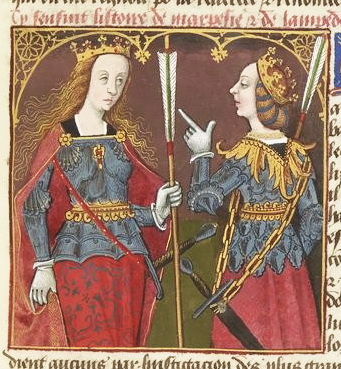
The idea of tough, ass-kicking women is one of the most popular tropes in popular entertainment today. For several generations now, TV shows, films, comics, and more recently computer games heavily emphasize the idea of the lady warrior. Few people probably assume that this trope was also popular in the medieval world. Perhaps the first impulse for the modern reader would be to cry “Burn the Witch!” and visualize a Monty Python skit. But this isn’t so close to the truth. At the very least we can say that medieval audiences did not hate the idea of warrior women. The notion was quite popular in period literature and art.

One author to exploit this popularity in a serious way was the Florentine Humanist Giovanni Boccaccio. In 1362 he completed the initial version of his De Mulieribus Claris, a book about one hundred famous and extraordinary women from history and mythology. He continued tinkering with the work until his death in 1375. De Mulieribus was extremely popular and was remade at least 100 times in the next century. Many versions featured woodcuts or (extremely expensive) paintings depicting the women in the book.
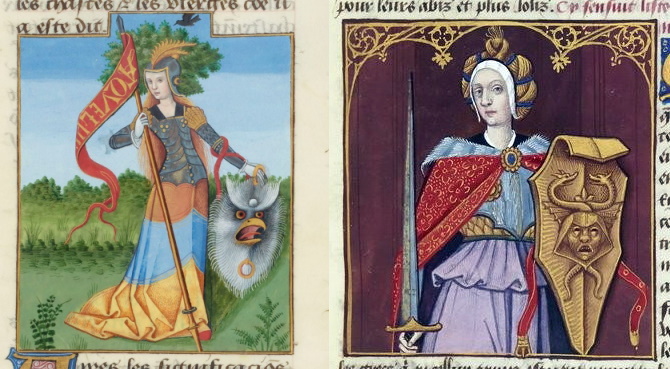
Not all of the great ladies, goddesses, and famous women in De Mulieribus were warriors. The book includes many scholars, saints, sorceresses, and others of renown, including many from the medieval period. But there is no shortage of women in armor, wielding weapons, and felling foes.

Boccaccio was of course, hardly the only medieval author to promote the idea of extraordinary women in general, and women warriors specifically. We see many other depictions of lady knights, lady warriors, and lady soldiers in sources throughout the medieval period. This alone, of course, doesn’t tell us much about the status of women in this time, that’s a bigger subject for another day. But we can certainly say that the iconography of women warriors was not unusual in the medieval period. Here are a few more examples from De Mulierbus and some other sources.
